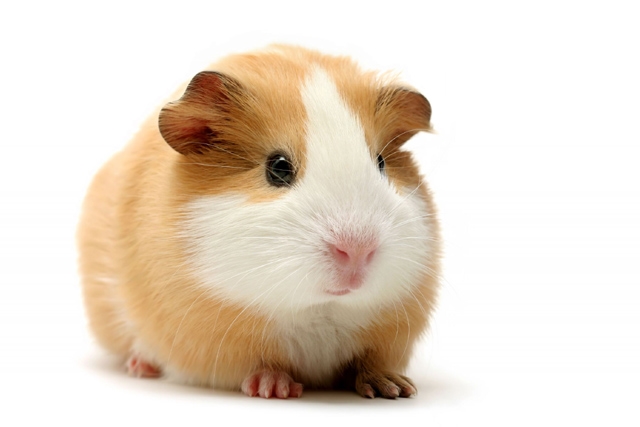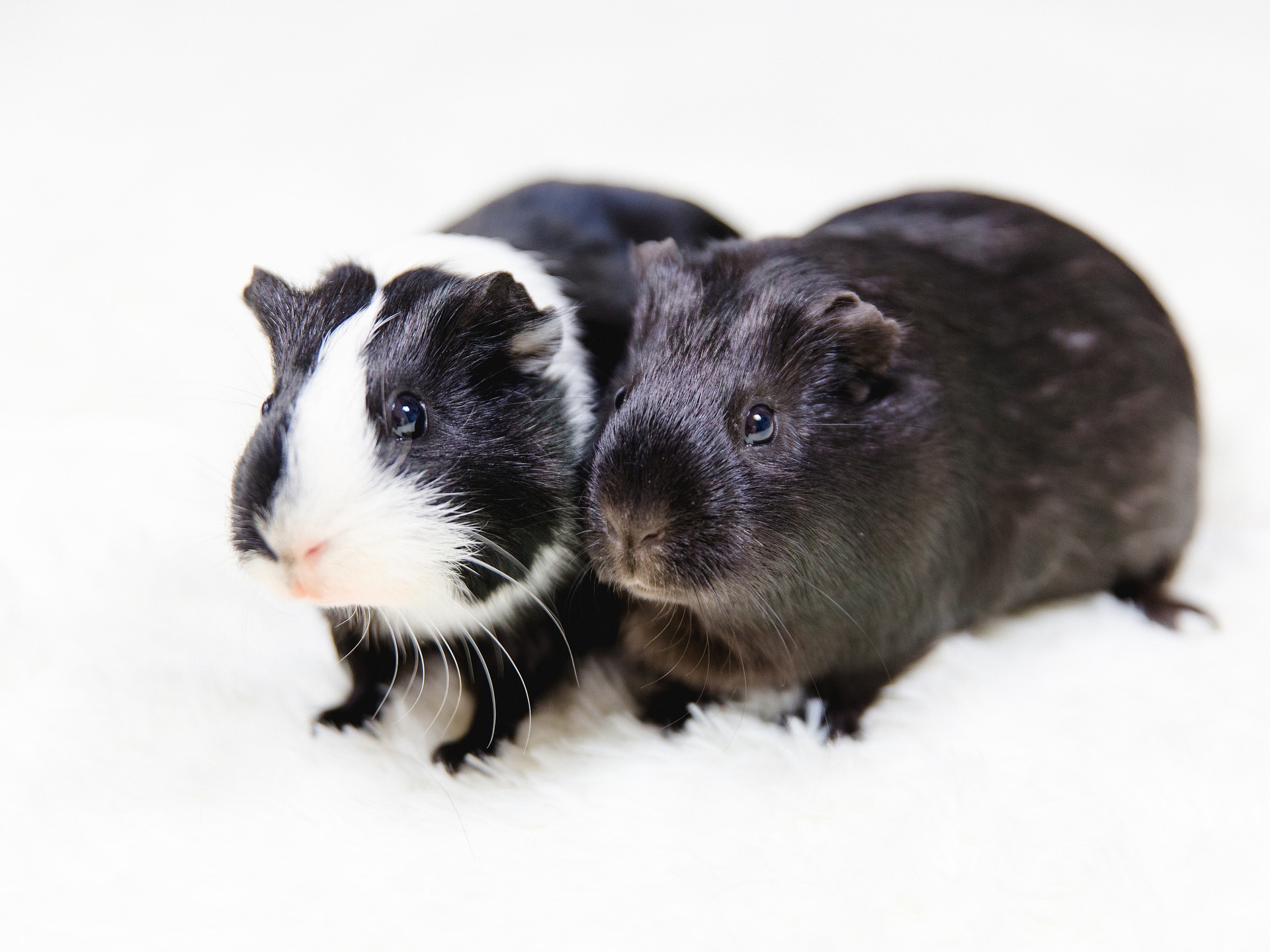
Guinea Pig Care
Looking for a pet that’s gentle and loveable but doesn’t require the run of the house? Then you may want to consider a guinea pig. Guinea pigs are one of several small, domesticated mammal species commonly known as "pocket pets."
While we’re not sure how they got their name, guinea pigs have been bred for more than 400 years. They descend from wild porcupine-like rodents of South America and are called "cavies" (a shortened form of their Latin name) by many breeders and owners. A guinea pig’s claim to fame is that it is the only domestic rodent with no tail.
With good care, guinea pigs live up to 12 years, with about six or eight years being the average. By learning all you can about your new pet; providing him with a clean home, a nutritious diet, and expert veterinary care; and giving him lots of love and affection, you can help Piggy enjoy a healthy, happy life.
Choosing
Before welcoming Piggy into your home, it’s a good idea to read up on guinea pigs and their care. Also, find a veterinarian in your area who is comfortable treating guinea pigs; not all of them are.
Your new guinea pig should be at least six weeks old before bringing him home. Guinea pigs can already breed at this age, so be sure not to keep a male and female in the same cage unless at least one is neutered. (Check with your veterinarian for more information about getting your pet spayed or neutered.)
Guinea pigs come in a variety of colors and coats from which you can choose. They may be a solid color, or a combination of two or three colors. Their coat may be short, long, silky or whorled. There are even hairless guinea pigs! If you choose a long-haired guinea pig, be prepared to help him groom himself by combing him once every two or three weeks.

Health
Guinea pigs should have regular veterinary exams. At your first visit, have your veterinarian show you how to clip Piggy’s nails, which will need to be done every two weeks or so. He or she may also suggest having your pet’s teeth trimmed regularly, as well.
The most common health problem seen in guinea pigs are colds that result from drafts, dampness or temperature fluctuations. While we don’t think of colds as being too serious, Piggy’s cold can quickly develop into pneumonia, so it’s important to have him examined by your veterinarian as soon as you notice signs of illness. Also, if your pet stops eating, have him seen immediately by the veterinarian, as this can be life-threatening.
Behavior
Guinea pigs rarely bite or scratch, but they can be messy-scattering food, water and bedding all over their cages. Their vocabulary includes about nine sounds, from whistling to purring to squealing. They are most active at dusk and dawn, but easily adjust to the routine of your household. Guinea pigs can be fun to watch. They like to explore new settings, but if scared, they’ll either freeze or scatter in different directions.
Your new guinea pig should be at least six weeks old before bringing him home. Guinea pigs can already breed at this age, so be sure not to keep a male and female in the same cage unless at least one is neutered. (Check with your veterinarian for more information about getting your pet spayed or neutered.)
Feeding
Guinea pigs rarely bite or scratch, but they can be messy-scattering food, water and bedding all over their cages. Their vocabulary includes about nine sounds, from whistling to purring to squealing. They are most active at dusk and dawn, but easily adjust to the routine of your household. Guinea pigs can be fun to watch. They like to explore new settings, but if scared, they’ll either freeze or scatter in different directions.
Your new guinea pig should be at least six weeks old before bringing him home. Guinea pigs can already breed at this age, so be sure not to keep a male and female in the same cage unless at least one is neutered. (Check with your veterinarian for more information about getting your pet spayed or neutered.)
In addition to the above, the following fruits and vegetables-fresh, washed, and with seeds or pits removed-can be fed as treats:
Handling
Guinea pigs rarely bite or scratch, but they can be messy-scattering food, water and bedding all over their cages. Their vocabulary includes about nine sounds, from whistling to purring to squealing. They are most active at dusk and dawn, but easily adjust to the routine of your household. Guinea pigs can be fun to watch. They like to explore new settings, but if scared, they’ll either freeze or scatter in different directions.
Your new guinea pig should be at least six weeks old before bringing him home. Guinea pigs can already breed at this age, so be sure not to keep a male and female in the same cage unless at least one is neutered. (Check with your veterinarian for more information about getting your pet spayed or neutered.)
Exercise
In addition to spending quality time with Piggy, help keep him entertained by giving him objects to play on. Try adding one or more of the following to his cage:running wheels, escape tunnels (PVC pipe-wide enough so that Piggy can’t get stuck in it, of course-makes a good tunnel), ladders or plywood boxes (to climb on). On mild days, you can supervise him in a safe, outdoor pen (with shade always available), and you can make an indoor playpen, as well, to provide him with more room to roam. Your friend would also enjoy exploring a closed room now and then, under your watchful eyes, of course.
Bathing
Guinea pigs ONLY need to be bathed if their fur is caked with urine, grease (e.g., from grease gland), or other substance. Do not, under any circumstances, submerge a guinea pig when bathing and do not get water in the guinea pig's ears. Hold onto the guinea pig when bathing and wet only the area that needs to be bathed with warm water. In many cases where a bath is necessary, you may only need to bathe the back end of the guinea pig. You may consider putting water in a small bowl, putting your guinea pig’s butt in the water, and propping your guinea pigs front legs on the rim so the guinea pig doesn't get any wetter than necessary. You may also consider using a sponge bath using a damp cloth to clean the dirt area. Use Gorgeous Guineas shampoo or a gentle baby shampoo. Rinse and dry thoroughly to avoid chills before returning the guinea pig to his/her home. You may use a hair dryer set to COOL ONLY to help dry your guinea pig.